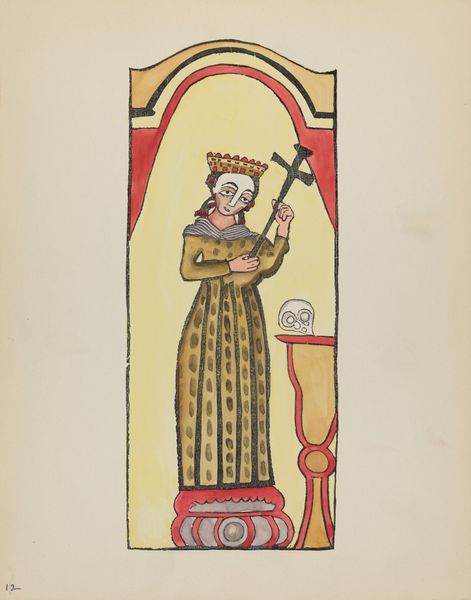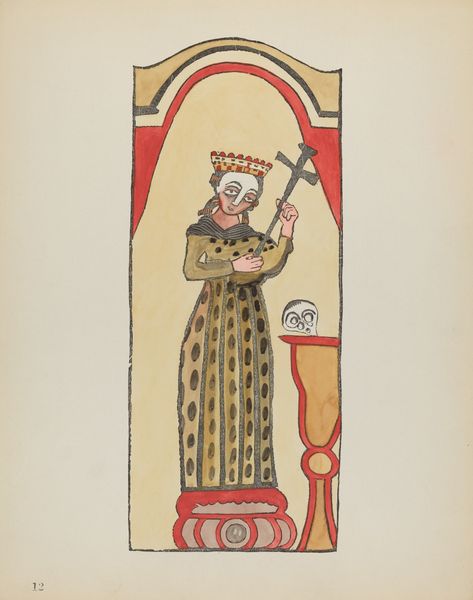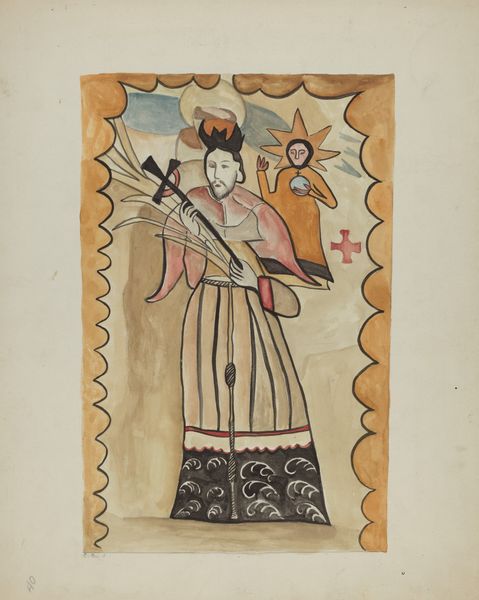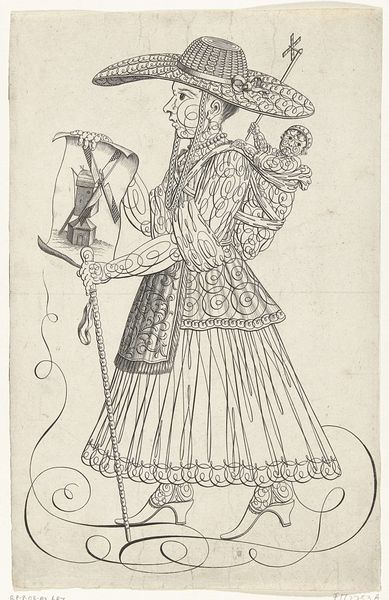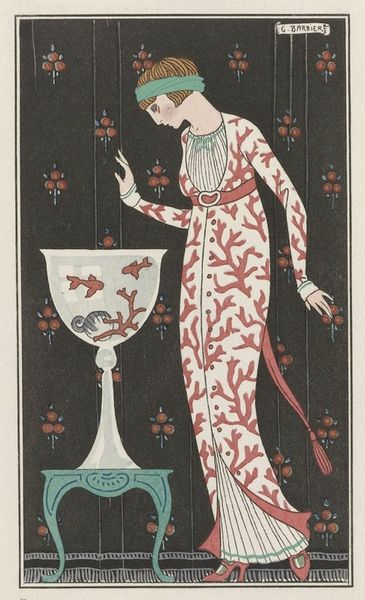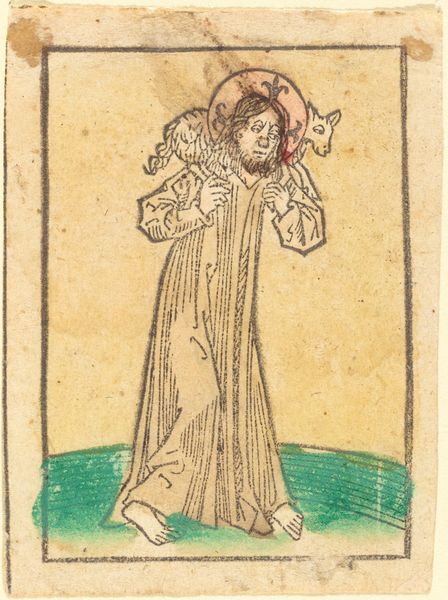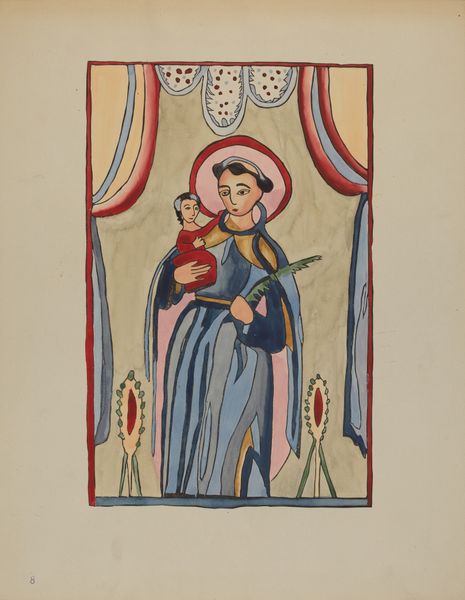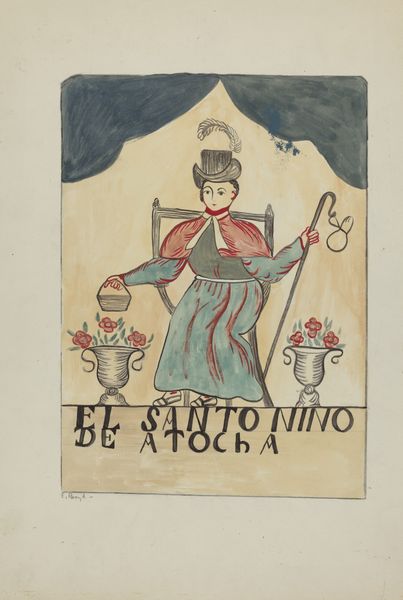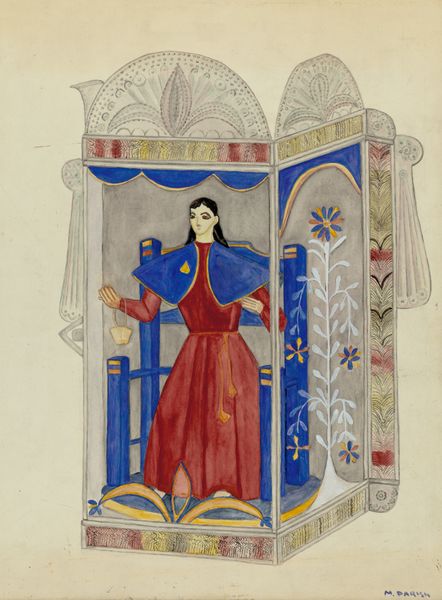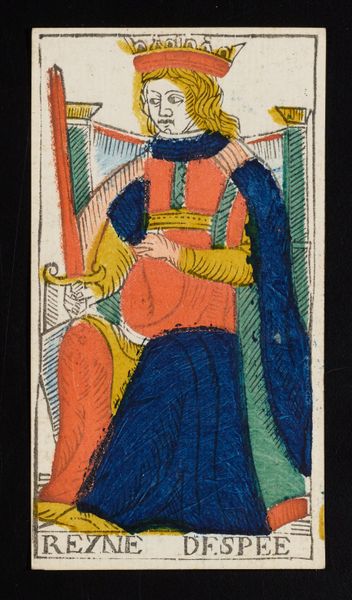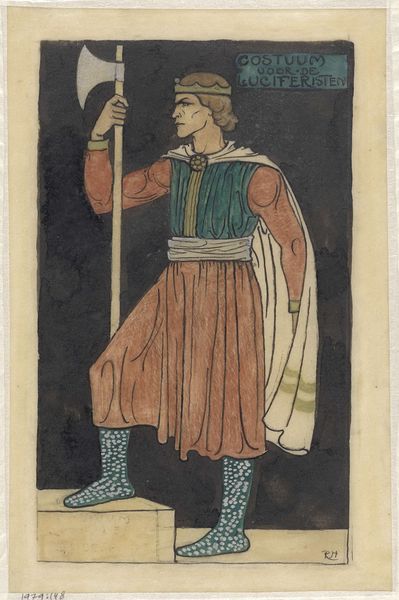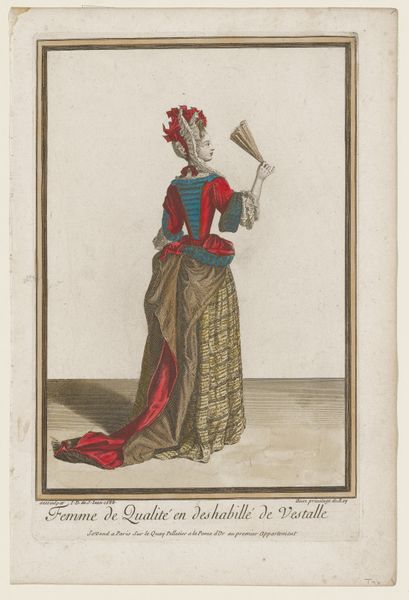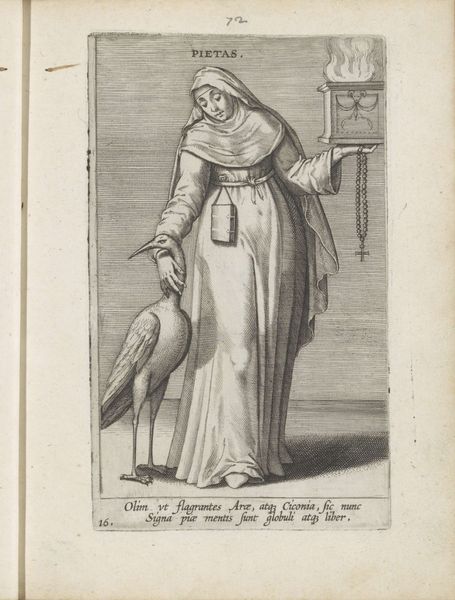
drawing, watercolor
#
drawing
#
caricature
#
caricature
#
watercolor
#
history-painting
#
miniature
Dimensions: overall: 36.3 x 28.9 cm (14 5/16 x 11 3/8 in.)
Copyright: National Gallery of Art: CC0 1.0
Editor: This is E. Boyd's "Retablo - Santa Rita," created sometime between 1935 and 1942, using watercolor and drawing techniques. It feels like a simplified, almost child-like rendering of a saint, with this haunting skull placed beside her. How do you interpret this work, especially in its historical context? Curator: This retablo offers us a glimpse into the complex interplay of faith, identity, and cultural survival in the Southwest. Boyd, as an Anglo artist studying and preserving Hispanic traditions, occupies a unique position. We should question how this might influence the portrayal of Santa Rita. Who do you think this imagery served? Editor: I suppose I see it as a preservation effort, almost like an anthropologist recording a dying culture. Curator: Exactly, but the act of preservation is never neutral. Boyd’s interpretation reflects not only the tradition itself but also the dominant Anglo perspective of that time. Consider the power dynamics at play when an outsider interprets and represents a marginalized community’s religious iconography. Does the work perpetuate or challenge existing stereotypes, or both? Editor: That’s a perspective I hadn't considered. I was so focused on the apparent simplicity, I missed the deeper layers of cultural representation. So, beyond the surface image, we must question whose voice and perspective are truly amplified. Curator: Absolutely. And by understanding these complexities, we can begin to unpack the interwoven issues of cultural appropriation, authenticity, and the enduring legacy of colonialism in artistic representations. It shows how art becomes an arena where social and political power is negotiated. Editor: This retablo tells a more complex story than I initially imagined! It highlights the power of art to reflect broader cultural struggles and historical inequalities. Curator: Precisely! It also allows us to analyze the ethics of representation and to consider whose stories get told and how.
Comments
No comments
Be the first to comment and join the conversation on the ultimate creative platform.
